The human body is prone to various diseases and disorders. The relationship between our body and diseases goes hand in hand, having various processes and effects. Bleeding is actually a natural process to bring about efficient wound healing.
But, when this bleeding gets associated with any abnormality or becomes a part of manifestation of any disease, it becomes a disorder which needs to be carefully managed. The father of Indian surgery, Sushruta, in his compilation entitled ‘Susruta Samhita‘ which is many decades old, mentions about more than one hundred and fifty bleeding disorders of oral environment and about five hundred ways to manage them.
The various bleeding disorders where in dental management would be required, is totally a clinical perspective rather than being a theoretical one. This is because it’s a condition where a particular dentist needs to manage a particular patient on his/her dental chair at that very moment to prevent the worsening of the condition. Enumeration of such disorders includes
- Vitamin K deficiency
- Leukemias
- Polytcythemia
- Aplastic Anaemia
- Purpura
- Haemophilias
- Hereditary Haemorrhagic Telangiectasia
- Diabetes
- Imbalance of sex hormones
- Ulcerative colitis
- Severe gum bleeding due to cardiovascular diseases
- Haemangioma
- Infections
- Trauma and
- various malignancies
Taking the etiology into consideration, it basically revolves round the qualitative and quantitative defects in physiology of the three major components of homeostasis, viz, vascular, platelets and coagulation, i.e – Vessel Wall/Vascular Disorders and Platelet Disorders.
- Congenital
- Acquired
- Coagulation Disorders
- Congenital coagulopathies {Haemophilia A and B, Von Willebrand’s Disease}
- Anticoagulant related coagulopathies {Heparin, Coumarin}
- Disease related coagulopathies {Liver Disease, Vitamin K deficiency}
- Fibrinolytic Disorders. These would have their own oral manifestations, few being Pathognomonic while others characteristic.
The common signs and symptoms include bleeding from superficial cuts and scratches, delayed bleeding time, spontaneous gingival bleeding, petachiae, ecchymoses, epistaxis, deep dissecting hematomas, hemarthroses etc. The Blood dyscrasias would show bleeding and necrosis of gingiva, hematoma and ulceration of mucosa, excessive bleeding upon trauma or extraction of teeth.
Most of the metabolic (Diabetes) and Endocrine (imbalance in hormones) disorders and disturbances too would present a similar picture. Certain Granulomatous diseases like ulcerative colitis would present with haemorrhagic ulcers. Some others severe conditions include Henoch Schonlein Purpura presenting with purpuric rashes and haemorrhage due to increased vascular permeability.
Genes and chromosomes too have a vital role to play when it comes to bleeding disorders. The X-linked recessive disorders –
Haemophilia A (deficiency of Antihaemophilic factor) and Haemophilia B (deficiency of Christmas factor) and Hereditary Haemorrhagic Telangiectasia (Rendu – Osler – Weber Syndrome) present with tendency of bleeding profusely due to thinness of capillaries and arterioles.
The severity of Haemophilia can be explained by a flash back of history where the very first descendent of the Royal family of Britain after Queen Victoria died on the dental chair after getting his tooth extracted due to profused unstoppable bleeding as there was deficiency of Christmas factor and lack of management measures.
Besides all these, the various Autoimmune disorders causing severe and profused oral bleeding can’t go unnoticed, the examples being Thrombocytopenic Purpura where there is bleeding due to excessive reduction in the platelet count that prolongs the bleeding time. There are spontaneous haemorrhagic lesions intraorally and bruising tendency.
Oral bleeding may be as a result of various periodontal problems as well such as in Aggressive Periodontitis, Acute Necrotizing Ulcerative Periodontitis and Gingivitis. Various other conditions such as Agranulocytosis and Chediak Higashi Syndrome that have negative impact on gingiva and periodontium can lead to bleeding on the chair during treatment.
After an overall slideshow of the various bleeding disorders, their etiology, clinical features, signs and symptoms, the fresh page of its management or treatment now opens. With a bleeding patient on the dental chair, most of the dentists panic as there is no time to correlate the theoretical knowledge with the practical one. At that very moment, the sharp practical reaction is what a dentist should have toward the existing problem.
The Indian history enumerates a variety of procedures used to tackle bleeding problems, both oral and systemic. The flashback dates back to “Bhagvad Gita” where Neem and Tulsi, crushed and applied were the ways to control bleeding. The medical works of ancient India, ‘Manu Smriti’ and ‘Susruta Samhita’ mention about volatile oil, Tannins, Vitamin C, Neem, roots of marshmallow, Siwak/Miswak to be the materials of choice for an effective bleeding control.
In those days, although people were hardly concerned about their oral health, as dentistry was not that evolved compared to medicine, yet people cared about the bleeding in their oral cavity due to any reason (according to surveys). The Sumerians were the first one to carry out extraction procedures but could not control severe bleeding as they used crushed bone, crushed egg and oyster shells for the purpose.
The Unani System of medicine was the first one to carry out surgical procedures in oral cavity with effective bleeding management using saline water, decoction of mint water, herbal powder water, amla rinses and water boiled with basil leaves (tulsi) and mint (pudina). Some of the Ayurvedic systems in India also used Grapefruit, Alum powder, Turmeric root powder, Black pepper powder and tea tree oil to control bleeding in the oral cavity.
‘Necessity is the mother of Invention’ and this proverb has given dental sciences, numerous opportunities today, through inventions, discoveries and even serendipity to reach up to a level in management of bleeding that would surely relieve today’s dentists off the tension of panicking and thinking ‘What to do now?.’ Today’s scenario of dental management of bleeding has turned over a new leaf. Today’s arena of bleeding management is based on ‘prevention’ and ‘cure’ methods.
Prevention– A detailed Case history of the patient would enable a dentist to prevent any such havocs as one would be aware of patients systemic health conditions, his body parameters and the various drugs / medicines (if any) the patient is taking. In addition to this the patients’ physician’s consult and various laboratory test reports (specific and non specific) before any treatment is an important preventive measure.
The various such specific and non specific laboratory tests would encompass:
- Platelet count
- Bleeding time
- Prothrombin time or international normalized ratio(INR)
- Activated partial thromboplastin time (aPTT)
- thrombin time
- Fibrin degradation products
- Fibrinogen assay
- Von Willebrand’s antigen
- Coagulation factor assays
- Coagulation factor inhibitor assays units
- Cogulation factor Inhibitor screening test (Blocking Antibodies)
- Capillary fragility test
- Tourniquest test, INR
Of all these tests, aPTT is a very sensitive test while INR (normal value:1) evaluates the extrinsic coagulation system, thus determining the presence or absence of clotting factors I (Fibrinogen), II (Prothrombin), V (Labile factors), VII (Proconvertin) and X (Stuart Prower factor). The labile factors include: Proaccelerin and Ac globulin. These methods work on the principle of “Prevention, being better than cure”.
Cure – There are various curative measures for management of bleeding in a dental office
- local hemostatic measures
- mechanical methods
- thermal agents
- chemical agents and
- various drugs
After dental extraction procedures, local agents which can be used are: Oxycellulose, Gelation pack, Gelatin resorcin formol, Glue, Cyanoacrylate, absorbable sutures, compressive splints and intermittent T.A.
Mechanical methods include pressure application, sutures and ligation and embolisation of the vessels.
Thermal agents account to cautery, cryosurgery, electrosurgery and lasers.
Chemical agents include: Astringent agents and styptics, monsels (ferric subsulphate), tannic acid, Bone wax, thrombin, Gelfoam, Oxycelm Fibrin Glue, Adrenaline (1:1000 or with L.A. à 1:80,000 to 1: 2,00,000).
The various essential Drug Therapy encompasses EAEA (Epsilon Amino Caproic Acid) and Tranexamic acid which reduces post operative blood loss and transfusion requirements. Factor VIII concentrate raises plasma level by two per cent (Protocol by Haemophilia of Georgia). During major procedures, factor level needs to be raised to about eighty to hundred percent at the time of surgery.
Now, since all these facilities are available today as options in front of a dentist, it does not necessarily symbolise efficient treatment or management. Management ends up perfectly only if a dentist knows how to use them judiciously, keeping the indications and contraindications of each in mind so that one does not end up with further complications (local or systemic).
For example, in cases where EACA is contraindicated, Heparin or Aprotinin can be used as substitutes. Hence, dental management required for patients with bleeding would depend on: the type and involved dental procedure, plus type and severity of bleeding.
For example, in case of reversible coagulopathies, it may be best to remove the causative agent and treat the primary illness or defect. For irreversible coagulopathies, the missing or defective elements may need to be replaced.
For restorative and prosthodontic therapies, rubber dam isolation is advised, so as not to traumatise soft tissues. Severely inflamed and swollen tissues are best treated initially with antiseptic mouthrinses (like chlorhexidine) to allow gingival shrinkage prior to deep scaling.
Doctors are considered to be Gods on Earth; in order to be obliged to this prestige that we have been honoured with in our profession, it becomes mandatory on our part as health care professionals to tackle the problems on our dental chair with care.
In addition to having the knowledge of various treatment patterns that science has given us today, adequate command over the subject and its judicious use would definitely send the patient back with a Happy Dent, which at the end of the day should be our Goal as a Dentist!

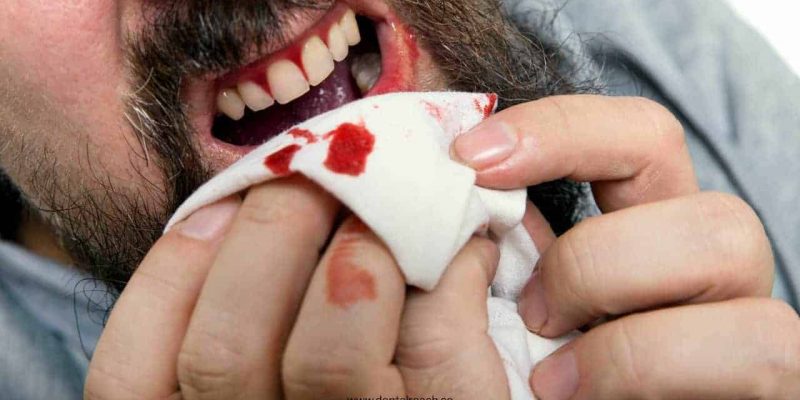



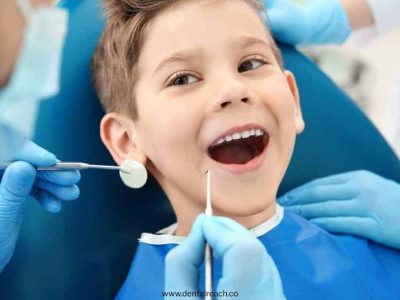

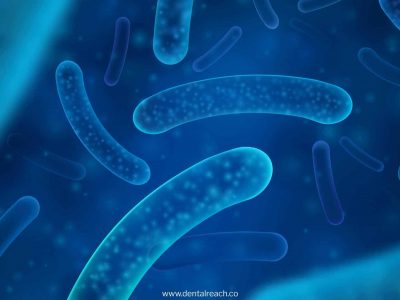

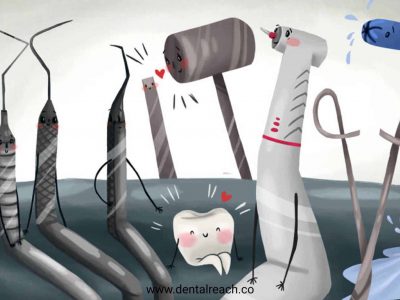
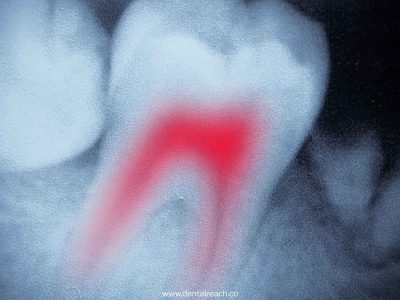









Amazing piece of writing doc. M sure clinicians n physicians ll b highly benefitted frm this manuscript.